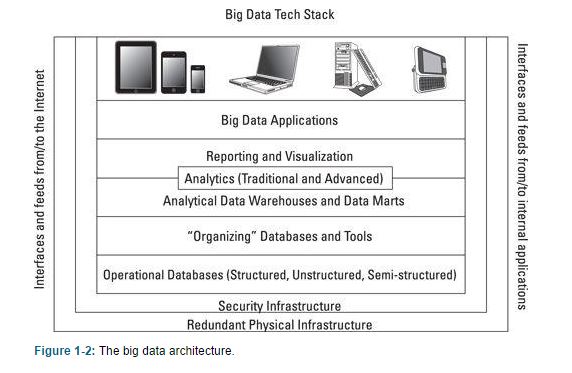FrontPage › BigData
Usually defined by three elements:
- Volume
- Velocity (speed)
- Variety
Organizations

- Relational Data Model: RDBMS (Relational Database Management System), mainly implemently by SQL (Structured Query Language).
- Entity-Relationship Data Model (ER): . . . It added additional abstraction to increase the usability of the data. In the model, each item was defined independently of its use. Therefore, developers could create new relationships between data sources without complex programming [1].
- Data warehouse in 90s
- Beginning of unstructured data use -- BLOBs (Binary Large Objects)
- Object Database Management System (ODBMS).
- COIAA -- Capture, Organize, Integrate, Analyze, Act
- Setting architectural foundation

[JPG image (43.71 KB)]
- Computer-generated or Machine-generated Data
- Human-generated Data
- Hybrid Data . . . .
- Sensor data . . . . RFID tags, Smart meters, medical devices, GPS data, etc.
- Web log data . . . Google analytics,
- Point-of-sale data . . . Cashiers' swipes . . . .
- Financial data
----
- [1] Big Data For Dummies, 2013










